 It is not very often that a date can be pinpointed for when the settlement of an area begins. Jennings has such a date. On July 8, 1876, A.D. McFarlain, the first settler in Jennings, filed for a homestead of 124 acres at the Federal Land Office in New Orleans. Shortly after, McFarlain and family, along with 10 section men, sett up camp just off the freshly laid railroad bed on the prairie between Bayou Nezpique and the Grand Marais.
It is not very often that a date can be pinpointed for when the settlement of an area begins. Jennings has such a date. On July 8, 1876, A.D. McFarlain, the first settler in Jennings, filed for a homestead of 124 acres at the Federal Land Office in New Orleans. Shortly after, McFarlain and family, along with 10 section men, sett up camp just off the freshly laid railroad bed on the prairie between Bayou Nezpique and the Grand Marais.The track from New Orleans to Houston would not be operational for several more years, but the Southern Pacific Railroad had begun placing depots at five-mile intervals along the track from Texas to promote settlement. Some settlements caught on.
By 1883 Jennings was made a regular stop. In March 1883, Sylvester L. Cary, originally from New York via Iowa and Illinois, and railroad construction engineer Jennings McComb came to McFarlain’s settlement. Even though McFarlain was the first to settle the area, the right to name the settlement belonged to Southern Pacific. Company officials wanted to honor one of its contractors, Jennings McComb, for building many of its depots. To honor him they named one of its settlements Jennings and another McComb. Jennings flourished. McComb never made it. The five-mile increments are evident today from the exits when traveling westbound along Interstate 10 from Jennings. Roanoke is five miles from Jennings. Welsh is five miles from Roanoke, and so on. The track was operational March 26, 1880. By the end of 1880, the settlement numbered twenty-five and settlers had built homes, a store, and a livery.
Cary had come south to escape the frozen winter with a group headed for Central Texas. He decided not to stay there, but he was not in a hurry to get back. He decided to head east to investigate the possibilities of Louisiana. He had read a book about the agricultural possibilities in Louisiana. When his train stopped in Jennings, the first thing he noticed were the cattle grazing on winter grass. The second thing he noticed was that there was plenty of government land to homestead.
Almost immediately after his arrival, "Father Cary," as he was soon called, was on a train to New Orleans to make a land claim. In fact, Father Cary was on the front doorstep of the Federal Land Office when the clerk arrived the next morning. The story was later recounted that the clerk commented to Cary with a smile, “You need not hurry, my good friend, nobody wants that land but you.” But after all of Cary's raving about the prairies near Jennings, the clerk later came to see himself. Upon arrival back in New Orleans, he filed his own claim for land near Jennings. Father Cary was quite convincing in his promotion.
He soon became the station agent for Souther Pacific Railroad. Immediately, he began writing letters home to Iowa promoting settlement around Jennings. His efforts later won him the position of Northern Emigration Agent for Southern Pacific Railroad in 1886. His job took him back to Iowa to advertise the opportunities of Southwestern Louisiana. On his travels, he made quick friends with the immigration agent for Manchester, Illinois. For the next fourteen years, he made trips north. Each year he returned with groups of farmers from Iowa and Illinois.
One of his early ads read: “The stereotyped advice to young men to ‘Go West’ has been changed and now is ‘Go South.’ The South is now building up and is increasing in wealth and population as is no other portion of the United States. The young man just starting out in life should have the most favorable opportunities and advantages that he can secure, for these are half of the battle of success. Southern states afford these advantages and opportunities.”
In 1895, Cary wrote an ad that read “People from the North, principally from Iowa, had acquired a block of land 5x24 miles in the vicinity of Jennings, by homestead generally, and there was yet much land about here subject to entry besides a large amount of Spanish Grants that could be bought for $1.25 to $7 per acre.” Canals were beginning flow about this time and the land lining them was premium.
Marketing the open prairies and advantageous climate of Southwestern Louisiana, Cary produced a booklet titled Southwest Louisiana, and Southern Pacific distributed 30,000 copies throughout the country. A transcription of a pamphlet published in 1899, titled Southwest Louisiana Up to Date - Omaha Edition is available at: http://library.mcneese.edu/depts/archive/FTBooks/cary.htm. In his pamphlet, Father Cary points out that a farmer in Iowa could sell his land for $75 to $100 an acre and then buy better land near Jennings for $10 an acre (up to $50 for premium land).
The citizens of Jennings built the first schoolhouse in 1885 at E. Academy and Church. Father Cary was the first teacher. Parents paid a small tuition for their children to attend. In that same year, the citizens of Jennings built a multi-denominational church. Until that time, the town's train depot served as church and meeting place for its new settlers.
Jennings was incorporated in 1888 with a population of 300. In July of that same year, a reporter from New Orleans wrote a piece on Jennings for the Times-Picayune. This is an excerpt from that article:
Also in 1888, citizens of Jennings built a new school. It was a two-story building. Two teachers taught classes on the first floor and the second floor was a public meeting hall. this frame building stood until 1907 when a modern brick building was built.And so, out of this prairie, so like in good things to Nebraska or Kansas or California, has been built of late years the little town of Jennings, the pioneer town of these modern Columbusses, who have discovered the true meaning of the new south. I can look out through my tiny windows of my room in the hotel and have a pretty fair view of all the place. It looks new, a little bleak and treeless, but throughly businesslike. I can see the big depot, where six years ago the first settlers camped until they could run up their temporary board shanty homes. Here and there is a big, handsome house, such as one might see in Minnesota, and rows of little gabled cottages set in large gardens..., new plank walks, again like Minnesota or Iowa, flanks of all the broad streets, and there is one saloon and several stores and two or three land offices, as if this were some new and more promising Denver of a mountainless state whose heart is gold. ...
In August 1888, Cary formed the Association of Northern Settlers in Jennings, which held a convention in New Orleans to encourage further immigration to Southwest Louisiana. Not long after its incorporation, city leaders outlawed gambling and liquor. Over the years, eight ordinances would be passed to outlaw gambling (from shooting craps to cockfighting). By 1890, there were 412 people living in Jennings, over 300 of them from Iowa. There was also now another church, several stores, a post-office, and a newspaper called The Jennings Reporter. The 1900 Census recorded 1,539 in Jennings.
 On September 21, 1901, Jennings became an instant success with the first well to strike oil in Louisiana. The surface conditions on Jules Clement's land near Evangeline were the same as those at the Spindletop strike in Beaumont earlier that year. Prospectors leased the 40-acre plot about four miles north of Jennings and contracted with the Heywood brothers to drill two wells at 1,000 feet. The second well was drilled in the hole of the first well and at a depth of 1832 feet, oil was struck. Thus began the Jennings oil boom. It would last a decade and then began to diminish, until it was gone completely in 1916.
On September 21, 1901, Jennings became an instant success with the first well to strike oil in Louisiana. The surface conditions on Jules Clement's land near Evangeline were the same as those at the Spindletop strike in Beaumont earlier that year. Prospectors leased the 40-acre plot about four miles north of Jennings and contracted with the Heywood brothers to drill two wells at 1,000 feet. The second well was drilled in the hole of the first well and at a depth of 1832 feet, oil was struck. Thus began the Jennings oil boom. It would last a decade and then began to diminish, until it was gone completely in 1916.These were wild years for Jennings. Many a speculator was drawn to Jennings during the oil boom, which meant that vice accompanied. Before the oil boom, Jennings had been dry for 12 years. In 1901, whiskey was allowed, but only under strict regulation. This lasted only a few months though and then Jennings was back to being dry. This was the beginning of a back-and-forth that lasted through Prohibition: From 1903 to 1908, Jennings was an "open town" again; from 1908 to 1914 it was dry, then "open" again from 1914 until 1919 (upon ratification of the 18th Amendment of the U.S. Constitution which brought Prohibition), and stayed that way until the 21st Amendment was ratified in 1933, ending Prohibition.
For all the excitement of 1901, tragedy was around the corner. The boom had come so quick and people were building everywhere, and there was no regulation on who could build what and where. On the morning of November 4, 1901, a fire ignited in the restaurant of J.F. Dudley. The fire destroyed the building. Wind, the early hour, no organized fire department, and a poor water supply caused the fire to spread and eventually burn four blocks of the business district. Jennings had to start all over. Some of the good that came from this tragedy were a fire department, sewer and water system, and zoning.
The first telephone lines were hung in 1892 for a system belonging to A.A. Peterson. The system had 62 phones when Southwestern Bell bought the system on June 14, 1901 for $1500. Blue laws in early-Jennings shut the telephone system down after 4 p.m. on Sundays and after 9 p.m. on weekdays. Crank-type phones were around until 1938 when a new switchboard was installed that only worked with rotary telephones. You can see a complete history of the telephone in a unique exhibit on telephone service in Jennings at The Louisiana Telephone Pioneer Museum located within the W.H. Tupper General Merchendise Museum (http://www.tuppermuseum.com/jtown.html).
The first bank in Jennings was opened in 1895 as Jennings Banking and Trust Company. The bank presently known as Calcasieu National Marine Bank began as the First National Bank in 1901, and later became Calcasieu Bank until 1934 when it acquired its present name. The Jeff Davis Bank was opened on March 12, 1947.
The first newspaper made its first print-run in 1889 and was called "The Jennings Reporter." Several other newspapers popped up in the last decade of the 19th Century, but it was not until 1900 that a newspaper with staying power was published. The Jennings Daily News started as the "Daily Times," then changed in 1901 to the "Times-Record" under new ownership. Again, under new ownership, the name changed to the "Jennings Semi-Weekly News in 1925. Franklin Hildebrand bought the paper in 1930, and a short time later would change the name of the paper to the "Jennings Daily News."
The first car in Jennings was driven in 1901 by a banker named Henry Huffman. The first speed limit in town was set in 1907 at 6 mph. To illustrate the transition from horse to car, a city ordinance in the early-days of the automobile required a car to stop if within 600 feet of an animal that had become frightened. The driver was to remain stopped until the animal was calm. This ordinance was repealed when cars were more prevalent, which was about 1912. In that year, the speed limit was raised to 10 mph in the business district and 15 mph elsewhere. Also, the minimum age for driving was set at 18 years old. It is interesting that roads in those days were built and maintained by cooperative labor, meaning an ordinance required men to work on roads for no pay or be fined. By 1922, there were ten miles of gravel streets in Jennings. The first cement streets were paved in 1929.
The first utility company that supplied power to the town began in March of 1901. George B. Zigler started Southern Heat and Light Company, which was taken over by Gulf States Utility in 1925. The Jeff Davis Electric Cooperative, which was responsible for bringing electricity to rural areas, opened in 1941.
The first movies in Jennings were shown in a building at 229 Main Street in 1909. Ten years later, the first Strand Theater was built. For many of these years, Blue Laws closed the theater on Sundays. But right around the time "Talkies" came around in 1932, public outcry forced city officials to allow the theatre to open. The Strand Theater that stands today was built in 1938.
By 1910, the population of Jennings was 3,925. Land values spiked during WWI and prices shot up to $70 to $80 an acre. Of course, like everything else, the bottom fell out in The Great Depression with land values dropping to $20 an acre. In 1915, Jennings sponsored an ad in back of the Jennings High School annual. The ad gave the following detailed description of the benefits of the town:
Jennings has a population of 4500, decidedly wideawake, prosperous, and is indeed a city of home gardens. Orange, Fig, and Plum trees bear abundantly, and Strawberries, Blackberries, and nearly all kinds of garden truck are grown profitably by our people.For a more complete history of early-Jennings, visit:
Our Educational facilities are as good as can be found in any city our size; we invite comparison as to Structure, Equipment or Corps of Teachers. Our Churches are of varied faiths, both Protestant and Catholic. Civic League, Ladies Clubs and Fraternal Orders are well represented. We have a Pulic Library, a Federal Building of $50,000 Variety [Post Office], an Auditorium with 800 seating capacity [built in 1907 by the Women's Christian Temperance Union; it later became the Masonic Lodge but was demolished in 1970], Ice Plant, Creamery, Canning Factory, 2 Modern Hotels, Elks Home and 2 Strong Banks; a Gas and Electric Plant with three units for development of power, giving 24 hours continuous service; we have an Elevator, Rice Mill, Machine Shops, Garages, Printing Offices, etc. Jennings owns her own Water Works and Sewer System, and has 26 Miles of Cement Sidewalks, also Curbing and Cement Crossings. Jennings has recently voted $75,000 for Street Paving [with gravel; cement paving would not start until 1929].
http://library.mcneese.edu/depts/archive/FTBooks/jennings.htm
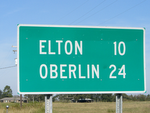
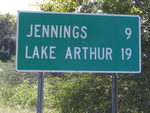
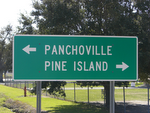
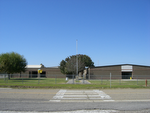
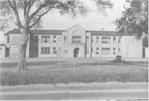
No comments:
Post a Comment